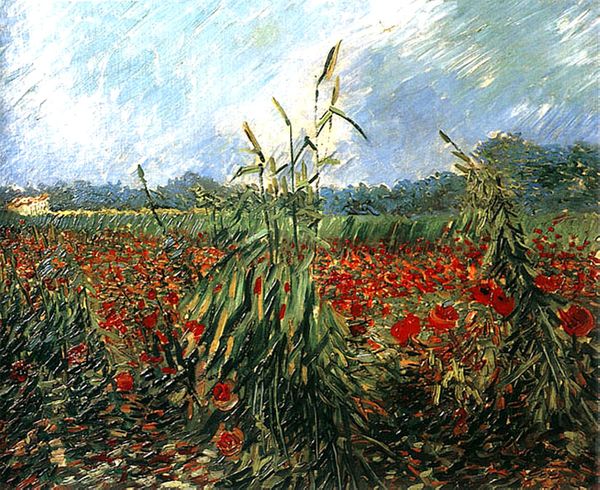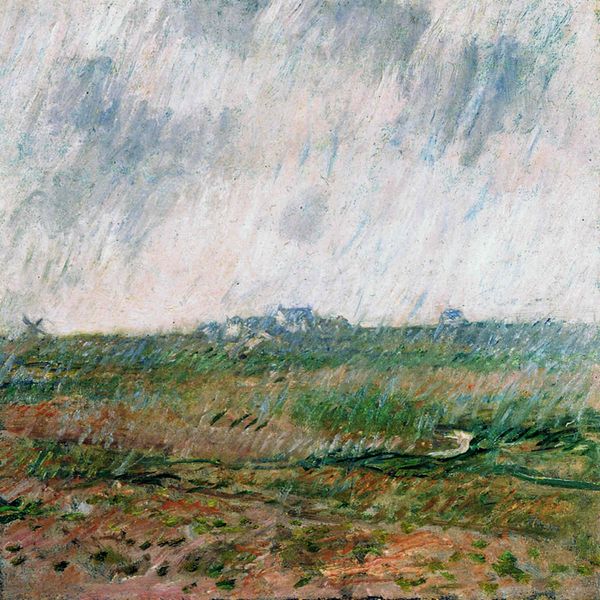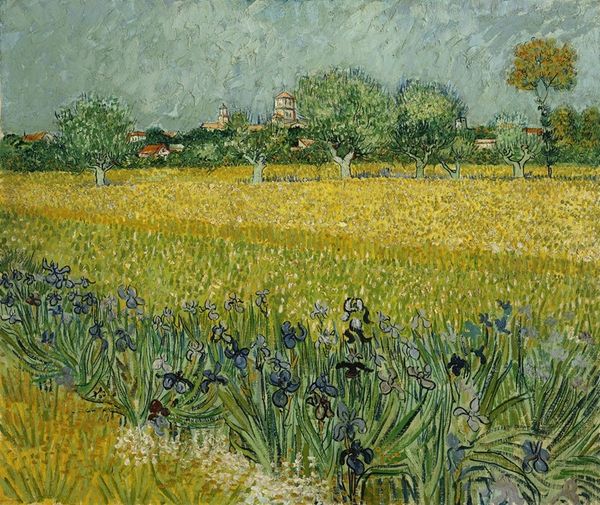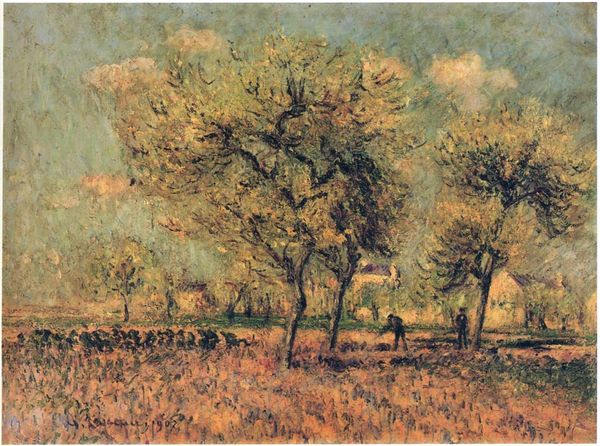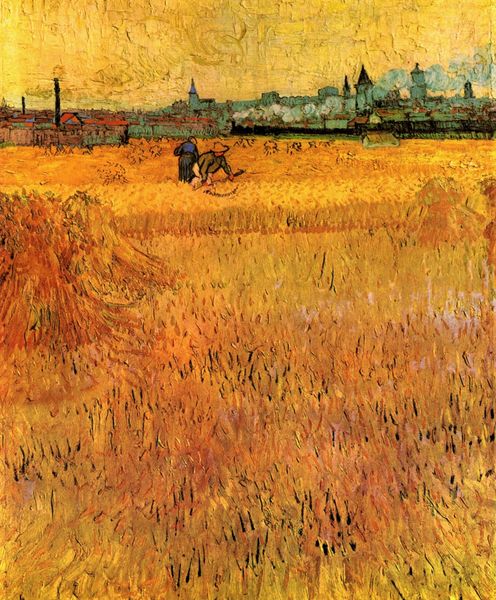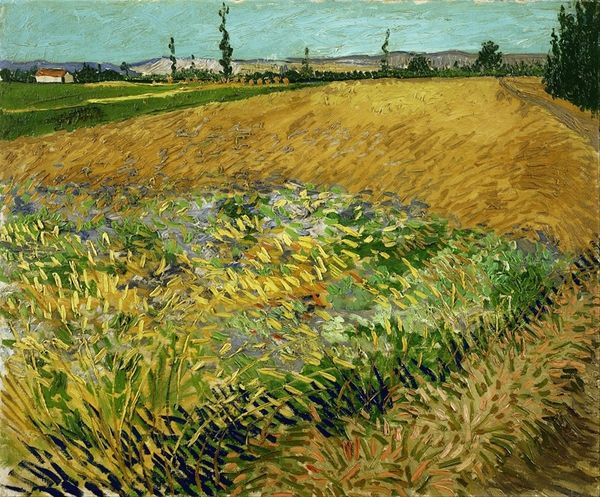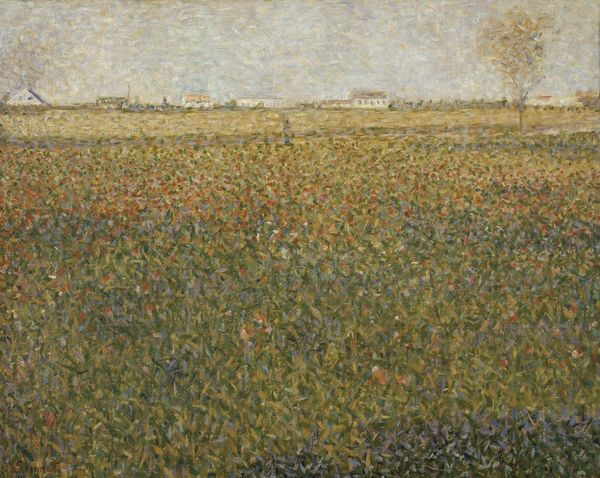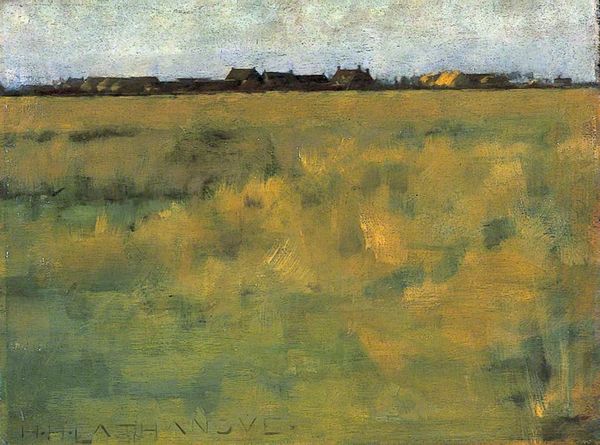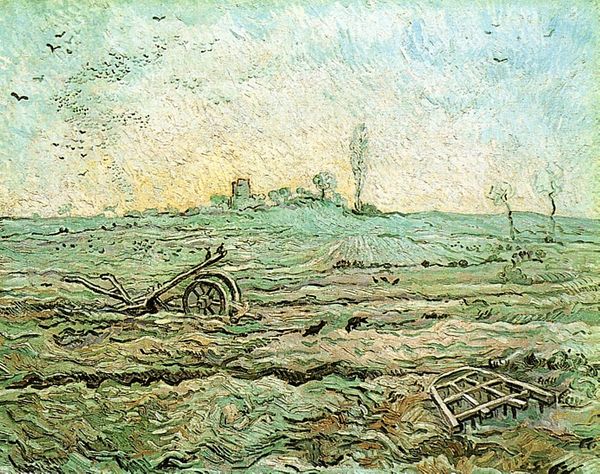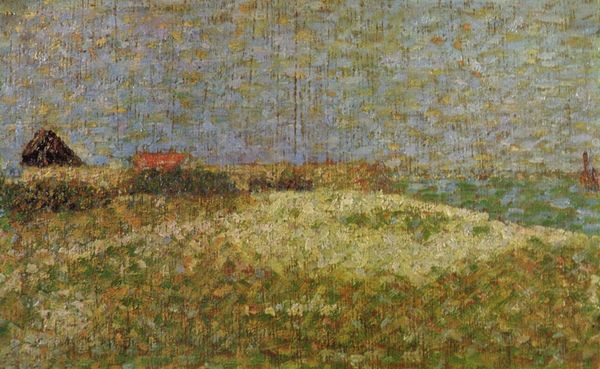
#
sky
#
abstract painting
#
rural-area
#
impressionist painting style
#
flower
#
impressionist landscape
#
possibly oil pastel
#
plant
#
paint stroke
#
watercolour bleed
#
watercolour illustration
#
mixed medium
#
mixed media
#
watercolor
Copyright: Public domain
Curator: Van Gogh's "Farmhouses in a Wheat Field Near Arles," painted in 1888, presents us with a seemingly simple rural scene, but I suspect a closer examination reveals so much more. Editor: My first impression is the sheer textural density of the field. You can almost feel the wind moving through the wheat and poppies, rendered with visible, expressive brushstrokes. The entire scene seems teeming with latent energy, both from the laborers who plowed it, and the environment which fuels this landscape. Curator: The materiality of Van Gogh's application here, it certainly adds another layer to this artwork. The paint itself becomes a protagonist, mediating between the viewer and the subject. Editor: Precisely! And when considering his well-documented struggles, we must examine what conditions produce a need to externalize intense inner-turmoil through manual expression of this sort. Note how this external process and visible texture adds dimension that more cleanly representational techniques could never offer. The texture almost serves as the "message," revealing the artist's emotional process of creation. Curator: The structural division, though. That sharp horizontal division between earth and sky, that thick application of impasto in the foreground contrasted with the somewhat flatter rendering of the sky. It begs the question: does this suggest an inner, divided state? Editor: Undoubtedly, but consider what elements, what materials Van Gogh was contending with and representing in their rawest states, labor, and its tools, material production and its impact on nature; a dialectical negotiation that shaped his perception and therefore finds its way onto the canvas. It transcends merely symbolic or aesthetic terms of understanding. Curator: So, for you, the true interest lies in decoding this not merely as an isolated aesthetic experience, but one contingent on specific socio-economic relations of production? Editor: Indeed. It's vital to engage with this work not just as an emotional statement, but a document recording a particular relation to environment, labor, and community. Curator: A powerful perspective. It is these contrasting but deeply interlinked readings, I suppose, that make viewing a piece such as this, continuously compelling. Editor: It provides fertile ground for us to reflect on not only our personal experiences, but what has produced the experience itself.
Comments
No comments
Be the first to comment and join the conversation on the ultimate creative platform.

